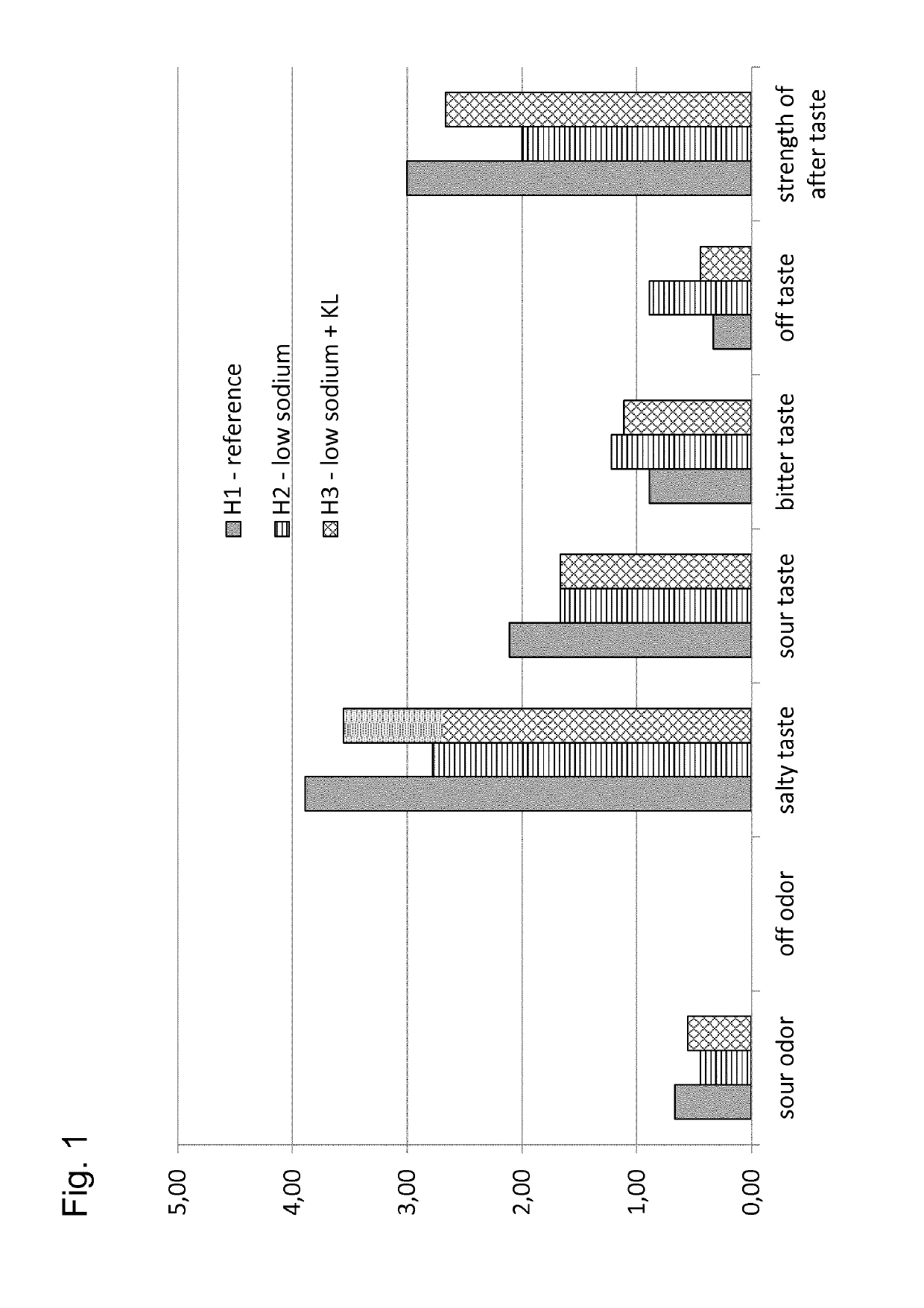Salt reduction in processed cheese compositions, processed cheese composition and use
a technology of processed cheese and composition, applied in the field of processed cheese composition, can solve the problems of affecting the shelf life of the product, slowing down the development rate of microorganisms, and affecting the safety of the product, and achieve the effect of improving the label
- Summary
- Abstract
- Description
- Claims
- Application Information
AI Technical Summary
Benefits of technology
Problems solved by technology
Method used
Image
Examples
example 1
on of a Processed Cheese Composition According the Invention
Milk Coagulation
[0068]For making the fresh curd, skimmed milk is heated up until 65-70° C. in a large pan, then acidified with 0.3% PURAC FCC 85, a 85% lactic acid product (Corbion Purac, the Netherlands), diluted in potable water in a proportion of 1:10. The acid solution is added slowly while the milk is constantly stirred.
[0069]The curd is separated from the whey using a strainer, then washed with water and pressed against the strainer for a couple minutes. The fresh curd is applied as a cheese ingredient in the preparation of processed cheese. The curd is stored under refrigerated conditions for a period of up to 3-4 days maximally.
Spreadable Processed Cheese Manufacturing
[0070]A high fat variant spreadable processed cheese with 20 g fat per 100 g product and a low fat variant with 5 g fat per 100 g product have been prepared. Both the high fat variant and the low fat variant have been prepared with a regular sodium con...
example 2
n of the Taste Characteristics and Water Activity for Different Preparations of Processed Cheese Compositions According the Invention
Materials
[0073]The following spreadable processed cheeses are used in this example:
Sample CodeType of SampleHigh FatLow Fatreference with regular sodium contentH1L1low sodium contentH2L2low sodium content +H3L30.85% potassium lactate product (78%)
Analyses
[0074]The following parameters are analyzed: taste, pH, water activity, sodium content.[0075]Taste: Two descriptive taste tests are performed with 9 trained panelists. The samples are scored on the attributes sour odor, off odor, salty taste, sour taste, bitter taste, off taste and strength of the after taste on a 6-point scale (0=not perceived; 5=strongly present).[0076]pH: a pH probe is placed in the center of each sample to measure pH. Measurements were carried out in duplo.[0077]Water activity: a quantity of each batch is placed in a cup and water activity is measured. Before measurements each batc...
PUM
| Property | Measurement | Unit |
|---|---|---|
| wt. % | aaaaa | aaaaa |
| wt. % | aaaaa | aaaaa |
| wt. % | aaaaa | aaaaa |
Abstract
Description
Claims
Application Information
 Login to View More
Login to View More - R&D
- Intellectual Property
- Life Sciences
- Materials
- Tech Scout
- Unparalleled Data Quality
- Higher Quality Content
- 60% Fewer Hallucinations
Browse by: Latest US Patents, China's latest patents, Technical Efficacy Thesaurus, Application Domain, Technology Topic, Popular Technical Reports.
© 2025 PatSnap. All rights reserved.Legal|Privacy policy|Modern Slavery Act Transparency Statement|Sitemap|About US| Contact US: help@patsnap.com


